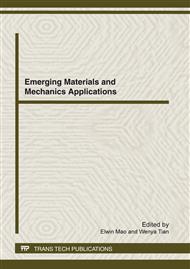p.658
p.663
p.668
p.672
p.677
p.682
p.687
p.692
p.697
Thermodynamics of Spherical Sponge Iron Reduced by Hydrogen
Abstract:
Spherical sponge iron (SSI) with high activity and intension could be prepared through direct reduction by hydrogen. To optimize the reduction technology, thermodynamics of SSI reduction was investigated. Oxygen residue ratio in SSI declined with the reaction time despite of reaction temperature. It was concluded that SSI reduced by hydrogen appeared to be the first-order reaction, and the apparent reaction rate constant k was 0.289 h-1 to 3.819 h-1. Activity energy of SSI reduction was 22.19 kJ•mol-1 and 81.58 kJ•mol-1 corresponding to the lower temperature and higher temperature. When the temperature was lower than T4, the reaction rate was lower. Consequently, the optimized temperature should be controlled more than T5 to elevate the reduction rate.
Info:
Periodical:
Pages:
677-681
Citation:
Online since:
March 2012
Authors:
Price:
Сopyright:
© 2012 Trans Tech Publications Ltd. All Rights Reserved
Share:
Citation:


